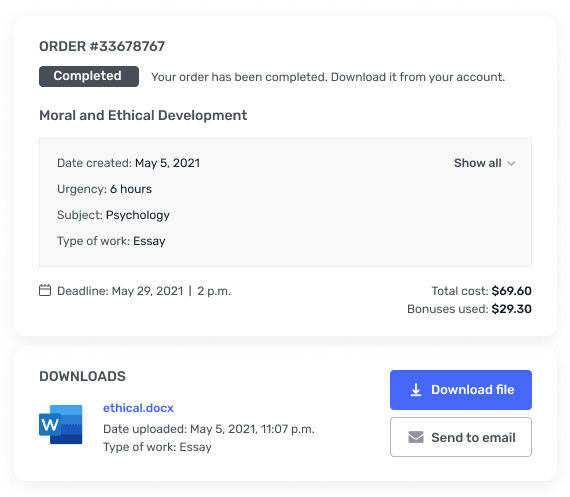Evolved over time and incorporates a variety of influences and elements
Elements of a MusicalNo one person created the musical. It evolved over time and incorporates avariety of influences and elements.First of all, of course, there is the music. Minstrel songs and the cakewalk;Irish ballads and patriotic jingles; ragtime marches and stirring blues;poignant torch songs and jazz ditties; totemic anthems and rock opera — themusical has captured every idiom of American expression. There is definitelya "Broadway" sound, often referred to as "Tin Pan Alley," a musical structurepioneered by songwriters like Irving Berlin and Richard Rodgers . However,this is by no means the only kind of music to appear on Broadway.Then, there are the lyrics, the words that go with the music. They can berhapsodic, witty, risqué, or patriotic. Broadway lyrics have become anotherform of native poetry — words, catchphrases, sentiments, and stanzas thathave entered the American lexicon. The lyrics of Cole Porter ,Ira Gershwin ,and Irving Berlin — to name but three — are routinely quoted in poetryanthologies around the world.A score by Cole Porter, and lyricist Oscar Hammerstein II with composerRichard Rodgers.In the early days of the musical, what mattered most were the songs, and itwas essential that they were catchy enough to amuse the audience orprovide material for dancers or comedians. But, beginning in the 1930s, thesituation, the book or libretto, of the musical started to achieve primaryimportance. A story or narrative became more frequently the spine of themusical, and in the 1940s, mostly due to the narrative sophistication of theshows of Rodgers and Hammerstein , the songs followed the plot and thecharacters, rather than the other way around. This narrative spine has madethe musical quite influential as a cultural and artistic force; from the epic Kern-Hammerstein "Show Boat " and its view of race relations (1927) to "Oklahoma! " (1943) through " West Side Story " (1957), " Hair " and itsantiwar sentiments (1967), " Company " (1970), and "Rent" (1996), thethemes of prominent Broadway musicals reflected the controversial,revolutionary, and nostalgic issues of an evolving American culture.George Balanchine leaning against a ballet bar during rehearsal.As the musical got more complex, it required a director to shape theproduction and its design and concept. Strong musical directors like GeorgeS. Kaufman and George Abbott emerged in the ’30s; currently major artistslike Harold Prince , Jerry Zaks, and Julie Taymor are key to shaping a musical’ssuccess. Choreographers were next to emerge as major artists; in the teensand ’20s, they were simply "dance directors," but influential choreographerslike George Balanchine and Agnes de Mille brought visionary ideas to thestage. With gifted choreographers like Jerome Robbins and Bob Fossebroadening their range in the ’50s, it was only matter of time before theytook on the job of director in addition to their dance duties. Thedirector/choreographer became a major visionary force on the stage, guidingevery visual and physical moment of a musical. Robbins and Fosse werejoined by such talents as Gower Champion , Michael Bennett , and TommyTune .photo credits: Photofest ; Historic American Sheet Music, "Keep Moving Cake Walk,"Music B-791, Duke University Rare Book, Manuscript, and Special Collections Library;Cole Porter Trust; and the Rodgers & Hammerstein OrganizationMore about how minstrelsy influenced the musical from writer Mel Watkinsand historian Ann Douglas , and an explanation of the cakewalk . Critic JohnLahr discusses the cultural mythology of the Broadway musical.Performers have also been the cornerstone of the musical. They could becomedians like Bert Lahr or Bert Williams ; singers like Ethel Merman or EthelWaters ; dancers like Ray Bolger or Marilyn Miller. With the stronger demandsof the narrative musical, performers had to become actors as well; indeed,after the success of nonsinging actor Rex Harrison in "My Fair Lady," actorswith minimal singing ability — Richard Burton, Lauren Bacall — became majormusical stars. Of course, what Broadway values most these days is the "triplethreat" — performers who can sing, dance, and act. In fact, in the past, therewere separate dancing and singing choruses; now everyone is expected to doit all. Star performers like Bernadette Peters , Brian Stokes Mitchell , andNathan Lane appear to have limitless talents.None of these elements would come together without the producer. The ideafor a new musical can come from a writer, composer, or performer, but it canonly be realized by a producer. He or she must raise the money for theproduction; the amount required is called the capitalization. This amountmust not only cover getting the show to opening night but also create afinancial cushion for several weeks or months until the show catches on withaudiences. The producer will rarely spend his own money; he raises it frominvestors — usually called backers or "angels," for obvious reasons — and payshimself a salary. If the show is a success and makes back its initialexpenditure (recoupment), investors get whatever percentage of theircontributed amount back in profits. For example, if you invested $1,000 in "Oklahoma! " in 1943 and it cost $100,000 to produce, you would get 1percent of the profits after recoupment (distributed weekly). If " Oklahoma! "had flopped, you would have lost all your money; luckily, the show was a bighit: anyone who did invest $1,000 received $2.5 million!New York’s theater district, and "Miss Saigon" poster.A Broadway musical is both a risky and an exciting proposition. It is the mostcostly business venture in the theater. Typically, a musical will now cost atleast $10 million to produce; to put this in context, 30 years ago, a musicalcost one tenth that amount. (Tickets also cost about one eighth as much in1974.) As hard as it is to raise that money, the rewards can be enormous.Cameron Mackintosh ‘s four shows (" Cats ," "Les Misérables," "The Phantomof the Opera," and "Miss Saigon") have run on Broadway for more than 62years total and, internationally, have made more money than these fourmovies — STAR WARS, RAIDERS OF THE LOST ARK, JURASSIC PARK, andTITANIC — put together. But the rising costs of originating a show have drivenaway more independent individual producers and opened the field forcorporations like the Walt Disney Co. For example, " The Lion King " may wellbe the most expensive show ever — rumored at above $20 million — and tookabout four years to turn a profit, but a big company can afford to wait thatlong for a return on their investment. That’s why there’s no business likeshow business!As if these weren’t enough, the story of the musical is also the story of itscreators and performers, men and women from every aspect of American -and foreign — society, who came together, often under the most invidiouscircumstances, to create something that transcended their differences.Refugees came together with native sons and daughters; task mastersworked with dissipated alcoholics; white producers championed blackperformers — and black performers turned right around and made fortunesfor those producers; artists fled financial failure for the blandishments of thelucrative worlds of film and television — then fled right back to the stage; gayartists created enduring models of heterosexual romance and heterosexualartists became icons within the gay world; songwriters lost fortunes in theDepression, only to regain them by writing about the Depression itself — thelist of ironies and strong compelling biography is endless, each story repletewith illuminations about our culture.Yet, still, the elements that constitute the musical don’t end there. Theproduction of the musical is an art form itself. Complicated and ofteninflammatory, the craft of producing a Broadway show involves knowing thepublic’s tastes (and usually challenging it), raising capital, battling societaltrends — all on the most expensive real estate in the most fractious city in theworld. And, finally, there is the dissemination of the musical, whichencompasses a vast narrative of communications and the media. Throughsheet music, over the radio, in movies, on television, on gramophones, hi-fis,and CDs, through word-of-mouth, through visiting tourists, servicemen,grandmothers and their grandchildren, the world of the Broadway musicalhas been brought to every corner of this country and, by extension, theworld. The musical is as powerful an image-maker of America as Hollywoodhas been and the shaping and shifting of that image is another culturalmarker.




